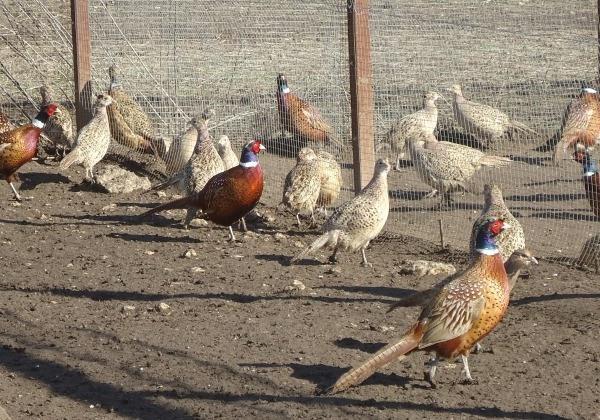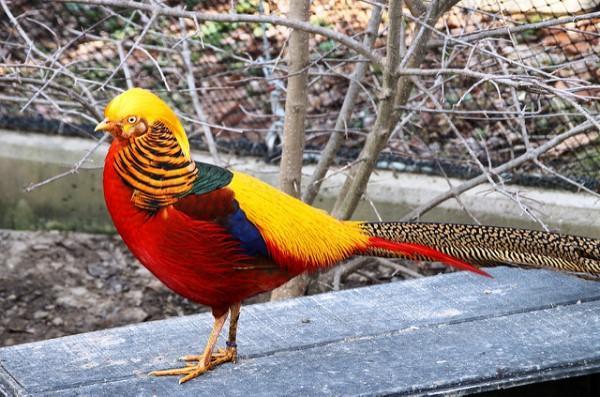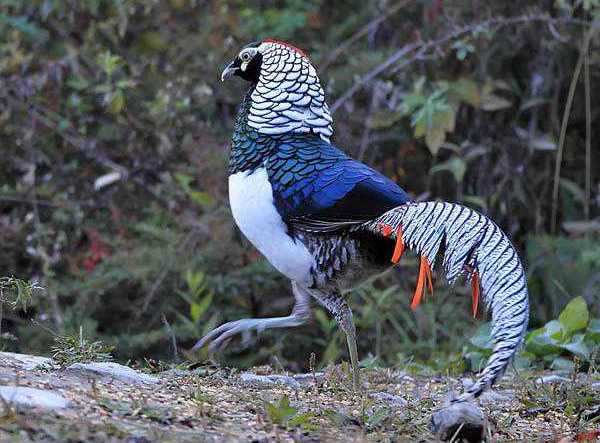Original business - breeding pheasants
The fact that poultry farming is one of the economically profitable areas of agricultural business is an indisputable fact. But, you must admit, a creative person hates to move along a boring path beaten by his predecessors many years ago.

Profitable business for poultry farmers
Is it possible to combine the desire to earn money with the dream of having something unusual and very beautiful in your household? Can! For this, you just need to breed pheasants on your site.



Someone will have a question whether this business will be really profitable. The answer to this question is yes. Why? Yes, everything is simple:
- Pheasants belong to the chickens family, therefore the very process of hatching and keeping these birds is not particularly difficult.
- The taste of pheasant meat is far superior to that of chicken. It is especially valuable for restaurants, as it is still somewhat exotic.
- The high egg production of pheasants is also an important factor for poultry farmers.
- Some people breed and raise this bird for delivery to hunting farms. True, in this case, pheasants should be kept in enclosures, where their content will be as close as possible to natural ones. Otherwise, the bird will grow up tame, and this will not be of interest to hunters.
- Since the bird is very beautiful, simply even luxurious, zoos and menageries buy it with pleasure. And novice pheasant breeders often turn to fertilized eggs, young animals and adults.

Differences in keeping pheasants and chickens
The first thing to consider is the aggressiveness of the males. Although roosters can be quite pugnacious, but it is the pheasants who fight among themselves, then not for life, but for death. Therefore, in no case should males be kept in the same enclosure.

There is such a difference between this species of birds and chickens: among pheasants there are breeds that are classified as monogamous. Naturally, they should be kept in pairs.

And those breeds that, like most representatives of poultry, are polygamous, usually settle 4-6 individuals in an aviary with one male. Moreover, the pheasant breeder must remember that the more females there are in the family, the lower their egg production will be.

The minimum floor space required for one adult bird should not be less than 2 square meters.

Organization of pheasant egg-laying sites
Females of this species of chickens also have their own habits. If chickens usually get used to laying in the same nest, then pheasants do not have such a memory. Their eggs can be found in a wide variety of locations. Therefore, the poultry farmer needs to be patient and carefully search every corner of the place where the bird is kept.

And the breeder of pheasants needs to find out where the females of the breed, which he chose, prefer to carry. After all, there are those who lay their eggs exclusively in the grass, others will choose a tall bush for this purpose. And there are those for whom it is preferable to lay an egg ... in the branches of trees.

It is impossible to "re-educate" a bird - it is driven by instinct. Therefore, the pheasant breeder has only one option: following the natural habits of the pets, organize them the most comfortable conditions.

Breeding pheasants at home
If a breeder caught an adult bird in the forest and decided to get offspring from it, then he set himself an extremely difficult task. Very often in captivity, the pheasant woman, accustomed to freedom, does not sit down to hatch chicks. Although sometimes poultry farmers manage to force the pheasant to breed their own offspring. But the result is especially successful if the bird itself was born in the aviary.

Therefore, it is easier to try to put eggs under the chicken or in incubator... It is also convenient because in these cases the brood will be easier to tame.
But it should be remembered that the incubation period of pheasant eggs is longer than that of chicken eggs. It is 24-25 days.
Pheasant care
Chicks bred without a mother do not need artificial lighting, unlike chicken chicks. Moreover, too much light leads to cannibalism.

To prevent chicks from overwhelming each other, they should be kept in 30 pieces in compartments with an area of at least a square meter. The air temperature in the first three days should be +28 degrees. Then it is gradually lowered to +20 degrees. So it should remain up to six months. Further, the bird is considered an adult and does not require special treatment.

The brood is fed for the first two months with a steep egg, chopped with greens. Then they are transferred to adult food.
Adult pheasant care
The air temperature for individuals older than six months does not play a special role. They can be kept outdoors even in winter. It is much more important to organize for them freedom of movement in enclosures and proper nutrition.

This bird is distinguished by its gluttony. The bulk of the diet is made up of barley, corn and wheat. The addition of oil cake to the diet helps to achieve good results.

Since all chickens are omnivores, boiled offal and meat waste, fish, meat of river mollusks will be very useful.

It is worth remembering: be sure to give pheasants greens, fruits and vegetables!
Grated raw potatoes, pumpkin, cabbage, apples, carrots, beets, zucchini are essential components of the diet of an adult bird. Chopped greens (assortment, quinoa, nettles, woodlice, green onions) are also extremely useful, as they are a storehouse of vitamins and microelements.

It is useful to add fish oil, shell rock, chalk, bone meal and special factory additives for breeding poultry to a mash of mixed feed.

Favorite delicacy for pheasants is colorado beetles.

Pheasants are given cold drinks. And in winter, snow can be used for this purpose at all.
The main feature of pheasants is considered their sensitivity to stress and fearfulness. Therefore, you should be careful when communicating with this bird: do not shout or make sudden movements near the enclosures, make sure that individuals do not fight with each other, try to keep strangers away from them.
